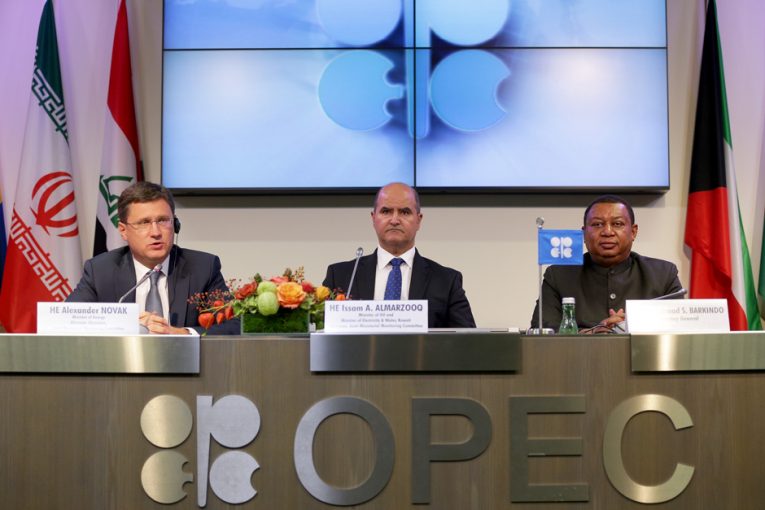
CALGARY – The agreement between OPEC and its allies to curb oil production appears to be finally draining the great crude glut that has been sloshing around in storage tanks around the world and weighing on prices.
Officials from the Organization of the Petroleum Exporting Countries and its allies such as Russia and Mexico met in Vienna on Friday and noted with some satisfaction that their agreement of curbing oil production by 1.8 million barrels per day till March 2018 is working – oil is being withdrawn from storage and global markets are moving towards equilibrium.
“The process is working fine so far,” Kuwait’s Oil Minister Issam Almarzooq told Bloomberg after Friday’s meeting. “We hope that we can consume the remaining overhead in this period,” he said, adding that it’s not possible to say whether the cuts will need to be extended until closer to expiry, he said.
Russian Energy Minister Alexander Novak also gave some indication of when the deal with OPEC countries such as Saudi Arabia might end. “A gradual, slow exit strategy” could begin between the second and fourth quarters of 2018 when “demand can absorb additional supply,” he said.
West Texas Intermediate fell 0.1 per cent to US$50.50 per barrel and Brent was trading at US$56.27, up 0.32 per cent on Friday.
Elevated oil storage levels have hung over energy markets for the past few years but the deal between OPEC and other oil producing countries that has been in effect for nine months is finally shrinking crude inventories around the world.
There was 340 million more barrels oil in storage in the Organization for Economic Co-operation and Development (OECD) countries than the current five-year average in January but that fell to 209 million barrels in July, the last month for which data was available, GMP FirstEnergy analyst Martin King said. Demand for oil had increased over the summer, further drawing down storage levels, he said.
Data from the U.S. Energy Information Administration shows oil inventory levels in the States trending upward from the time oil prices began to collapse in July 2014 and peaked at 535 million barrels in March 2017 but has declined to 472.8 million by the week of Sep.15.
“I feel very, very confident that the market is starting to tell us that more of that surplus will be eliminated by the end of this year and the emerging backwardation is going to speed up that process even further in drawing those barrels out of storage,” King said.
Backwardation happens when the current price of oil is higher than futures contracts indicate, so there is an incentive for traders to draw oil out of storage. King said that market dynamic is playing out now.
The trend toward lower storage should eventually help reverse bearishness on oil, Nine Points Partners portfolio manager Eric Nuttall said, adding that oil production growth in the U.S. has been flat for five months.
Nuttall said it’s easy “to buy into the universal group think” on oil, which assumes there is a massive global crude oversupply and “infinite” production coming from the U.S. at US$50 per barrel.
He said oil storage levels are declining, U.S. production is stalling and “the ingredients for a powerful rally are in place.”
“We’re finally starting to see that this week,” Nuttall said in an interview, noting that oil prices and energy stocks have rallied and have room to continue rising as “long-only money” from mutual funds are buying oil stocks again.
Bernstein Research analyst Neil Beveridge expects oil storage levels in OPEC countries, which are still overstocked, to reach normal levels by the end of 2018 if the cartel’s member countries extend their agreement to cut production to buoy global oil prices.
“We expect global inventories to continue falling through to year end, although not by enough to reach normalized levels,” Bernstein Research analyst Neil Beveridge wrote in a recent research note.
But the market is still not in the clear and OPEC will be watching inventory levels closely in the next few months before it plots its next move.
“Market rebalancing takes time and it is very likely OPEC will take a hard look at extending the current agreement again but that decision will wait until much closer to the March 2018 end point,” executive director for the Deloitte Center for Energy Solutions Andrew Slaughter said in an emailed statement.
Financial Post with files from Bloomberg
gmorgan@nationalpost.com
Twitter.com/geoffreymorgan
You can read more of the news on source
